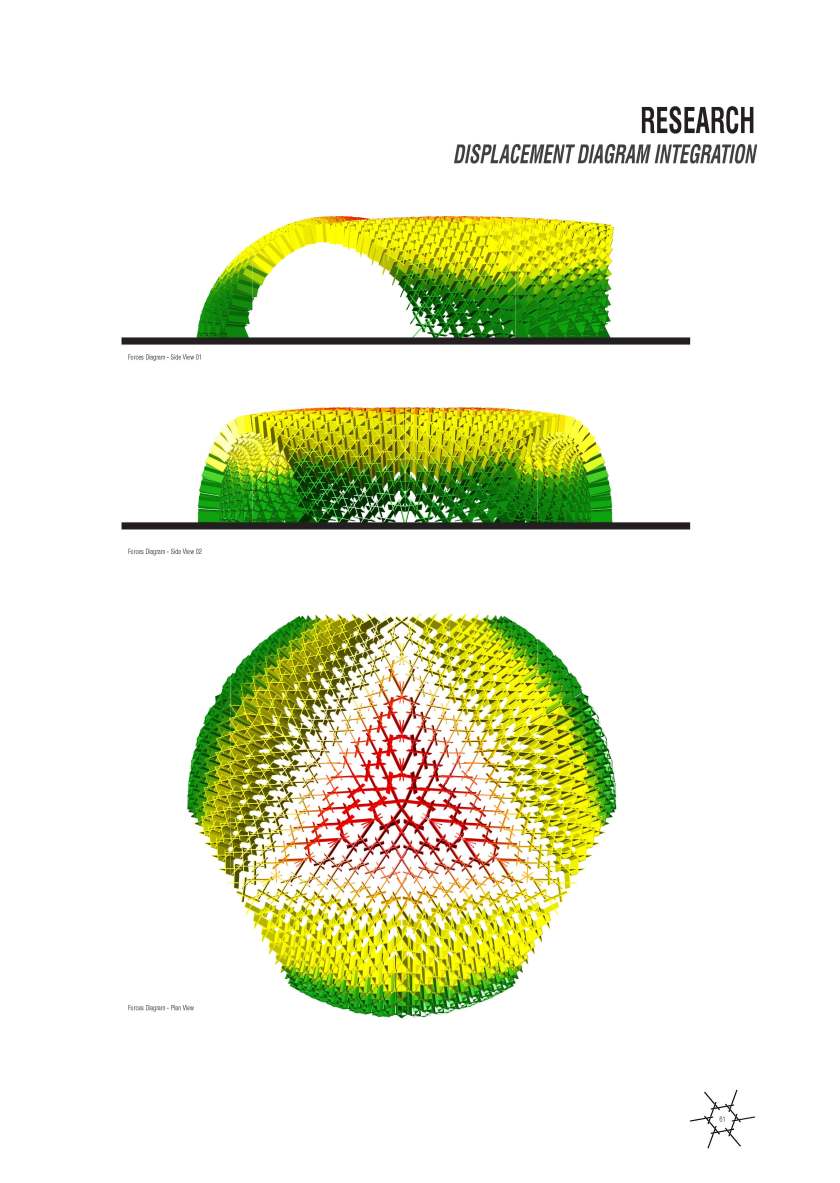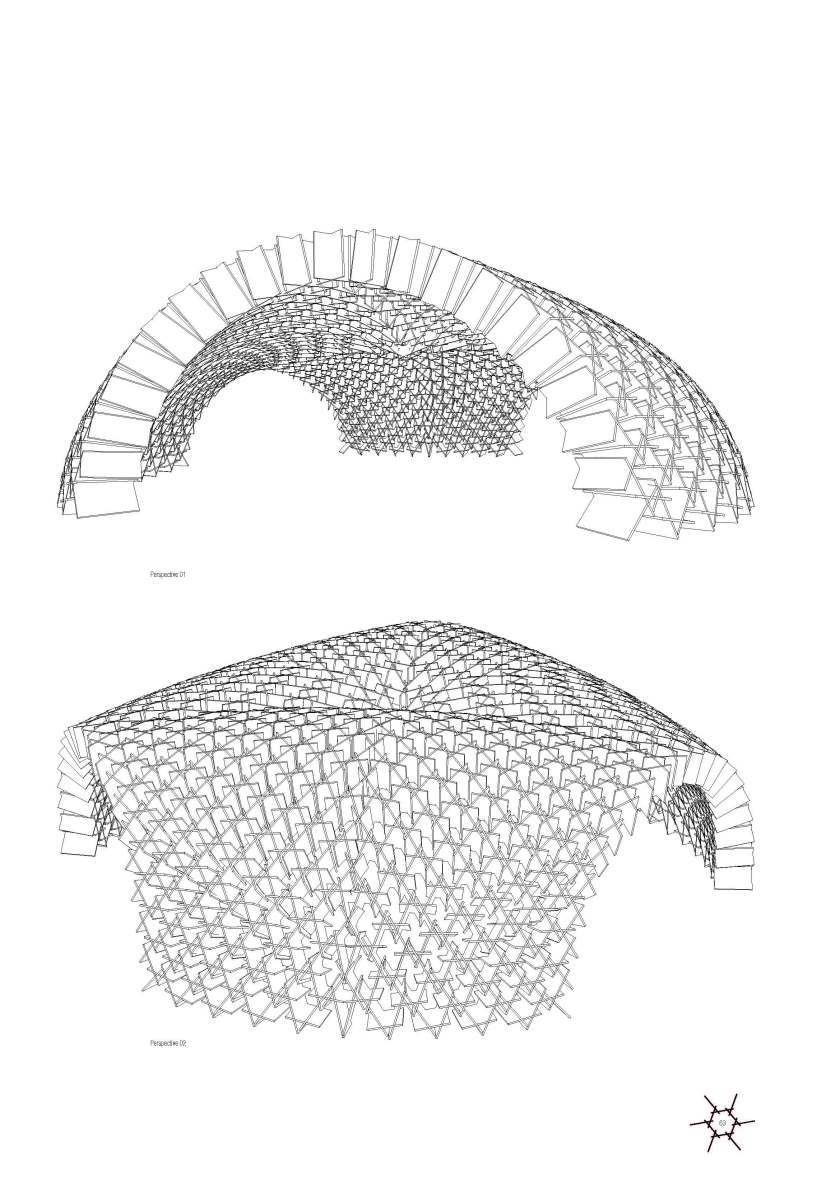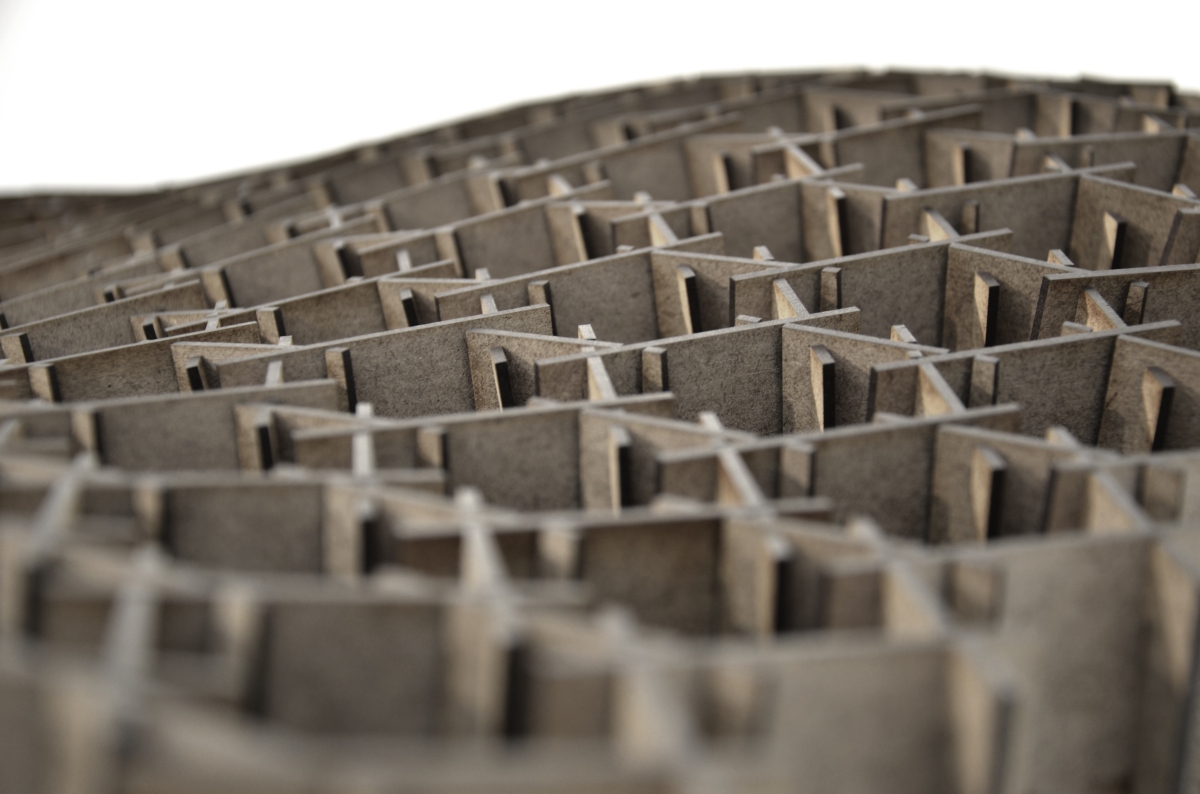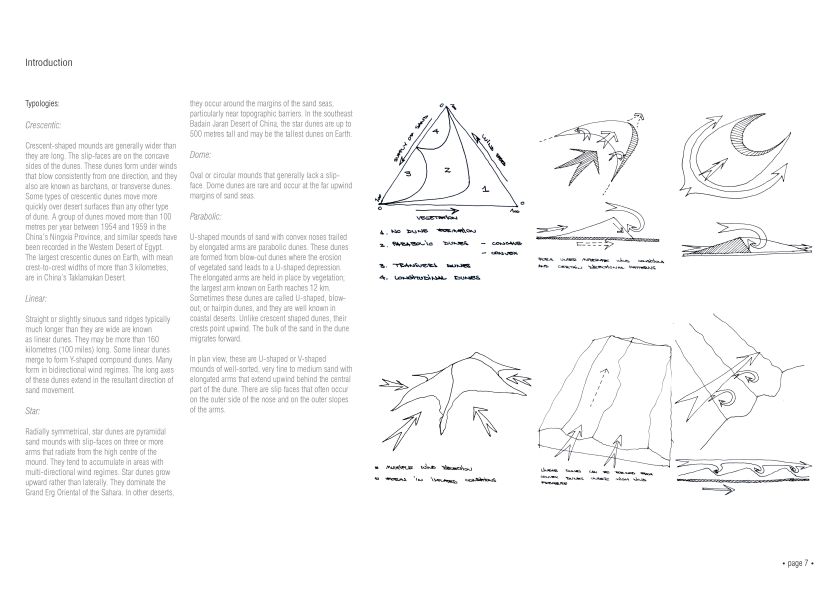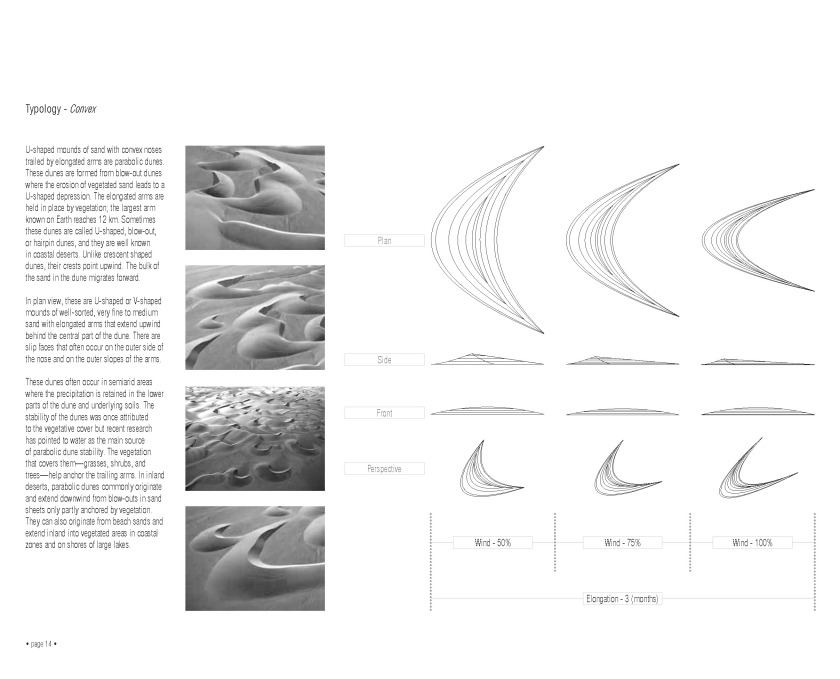The inspiration for this research came from the Asian artist Ren Ri, who uses bees in order to generate his sculptural work. He predefines the space for the bees to work with, and allows for a time period for the honeycombs to take shape.


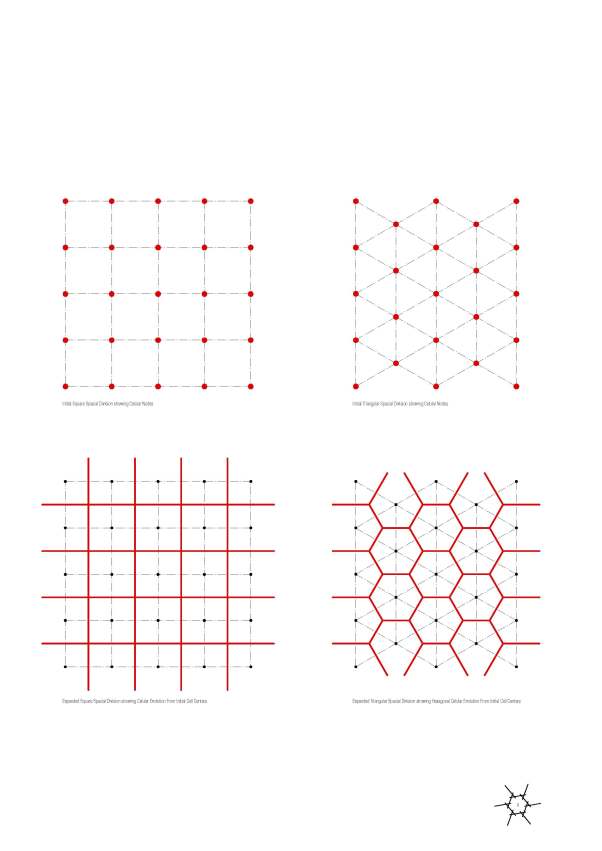
There are three types of surface division that manage to fill up all the area with prime geometric space – triangular (S3), square (S4) and hexagonal (S6). Other types of surface division, either leave gaps between the prime elements, which need to be filled by secondary shapes, or are confined to irregular shapes.
Research shows that the most efficient way of dividing a surface is through a minimum number of achievable line intersections, or a maximum number of membranes. In either case, the hexagonal division fits the case. This type of organization is a second degree iteration from the triangular division. It is formed by identifying and connecting the triangular cell centroids.
Such as in the case of soap-bubble theory, these cells expand, tending to fill up all the surface area around them, and finally joining through communicating membranes.
From a structural point of view, the best integration is the triangular one, because of the way each element (beam) reacts to the variation of the adjacent elements.
By converting the elemental intersection in the hexagonal division from a single triple intersection to a triple double intersection, the structure would gain sufficient structural resistance. This can be done through two methods – translation or rotation. Translation implies moving the elements away from the initial state in order to open up a triangular gap at the existing intersection. This method results in uneven shapes. In the case of rotation, the elements are adjusted around each middle point until a sufficient structural component is created. It is through rotation that the shape is maintained to a relative hexagonal aspect, due to the unique transformation method.
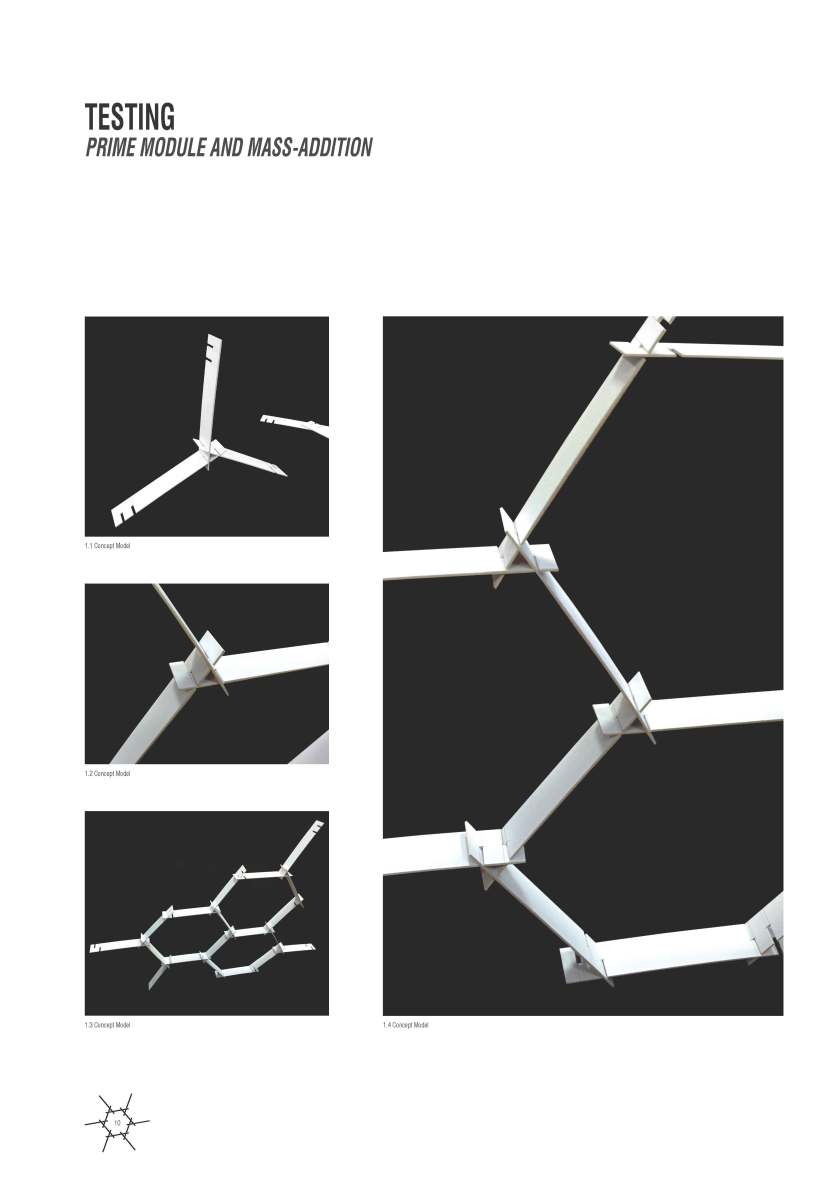





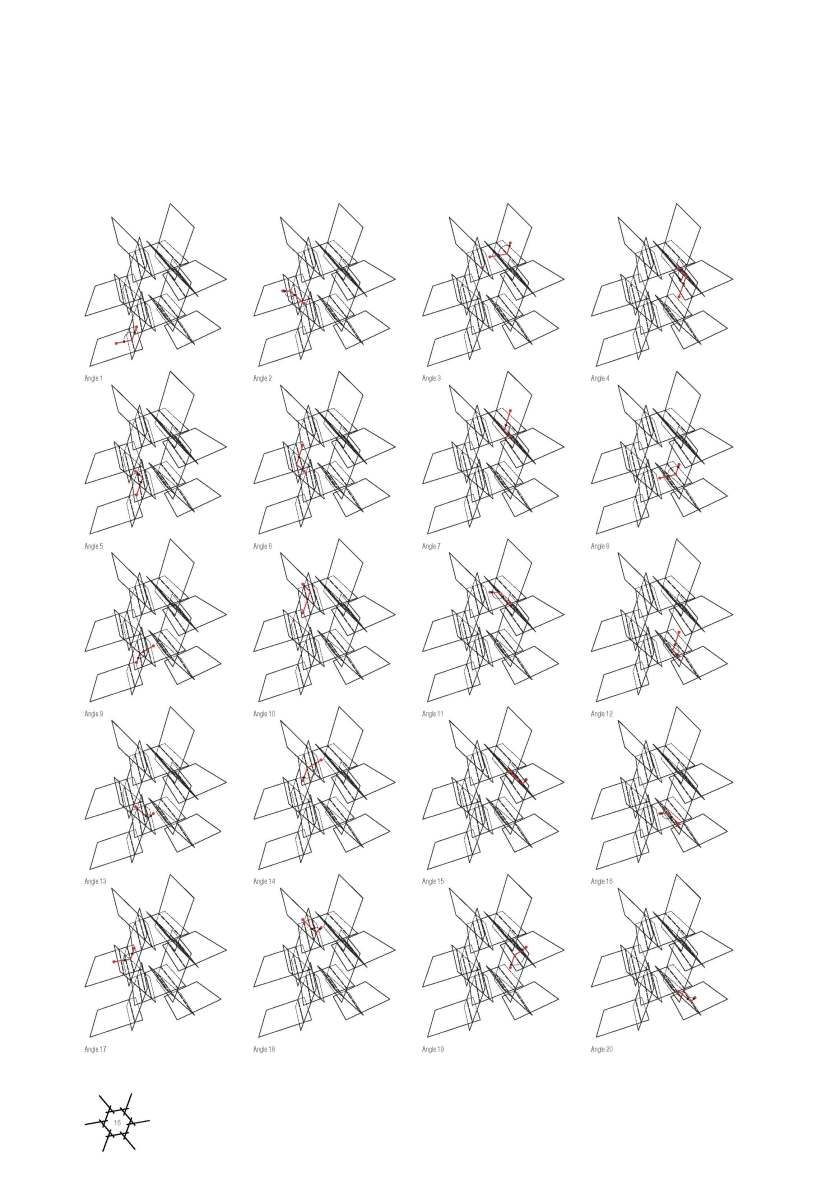





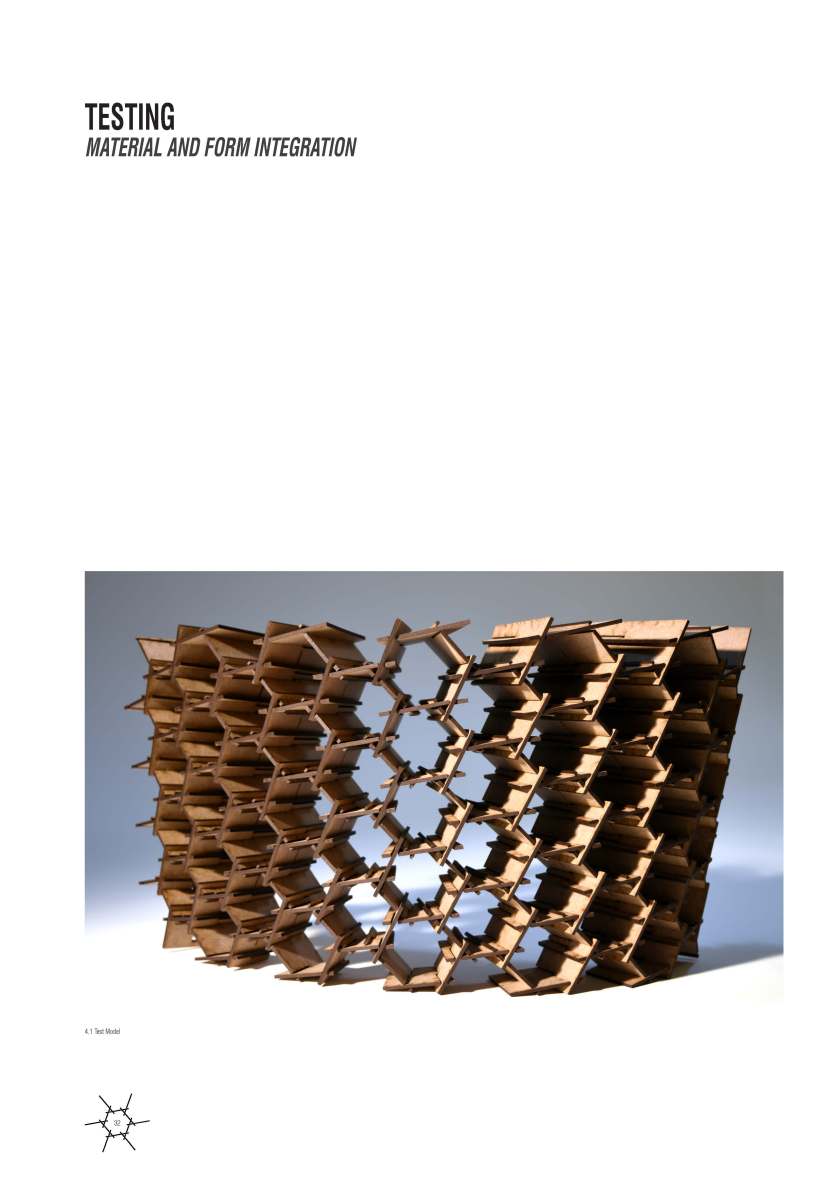

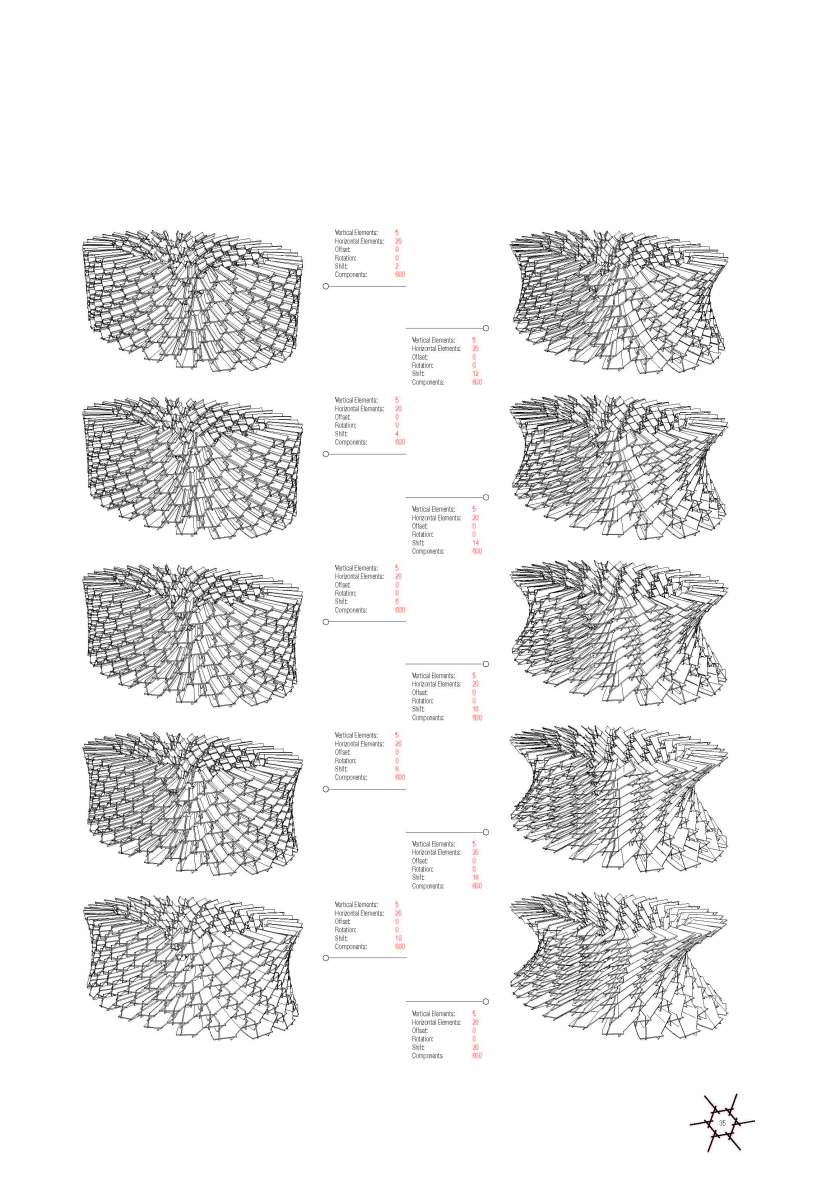
Pursuing the opportunity to test the system through a 1:1 scale project, I was offered the chance to design a bar installation for a private event at the Saatchi Gallery. The project has been a success and represents a stage test for the system.





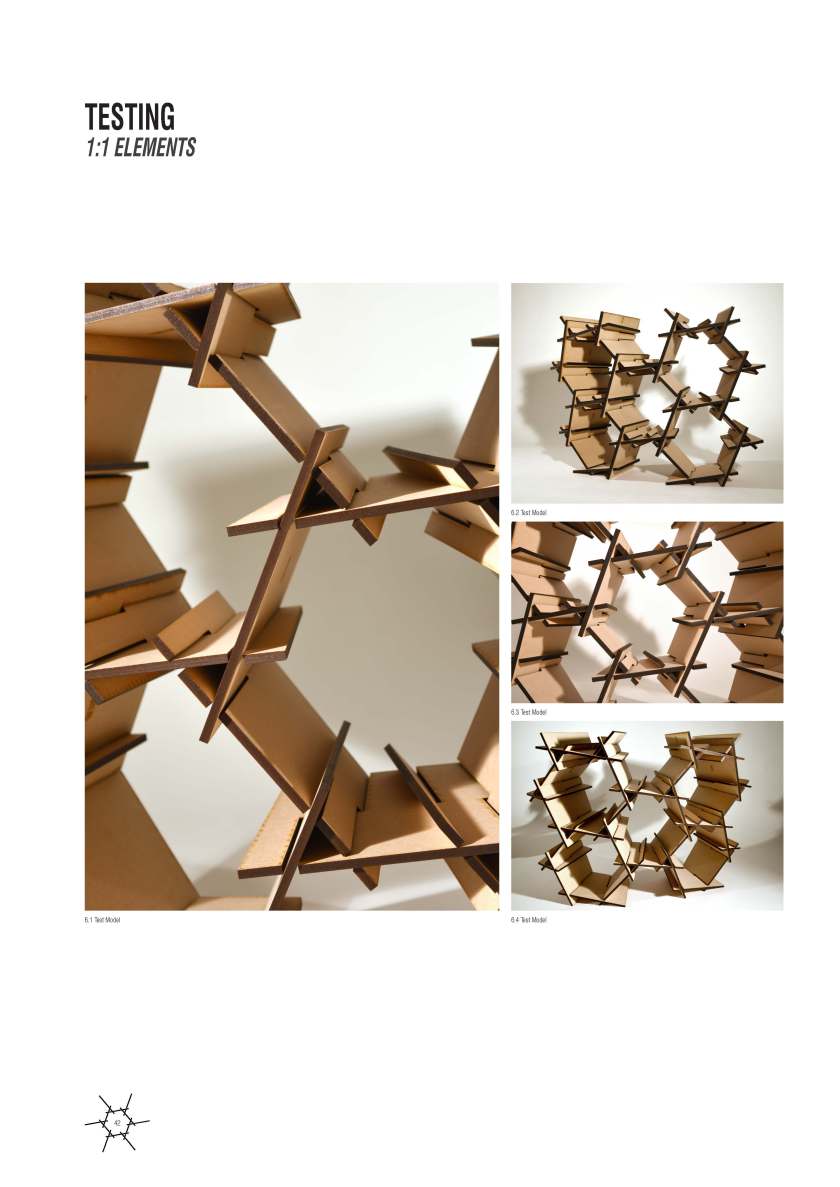

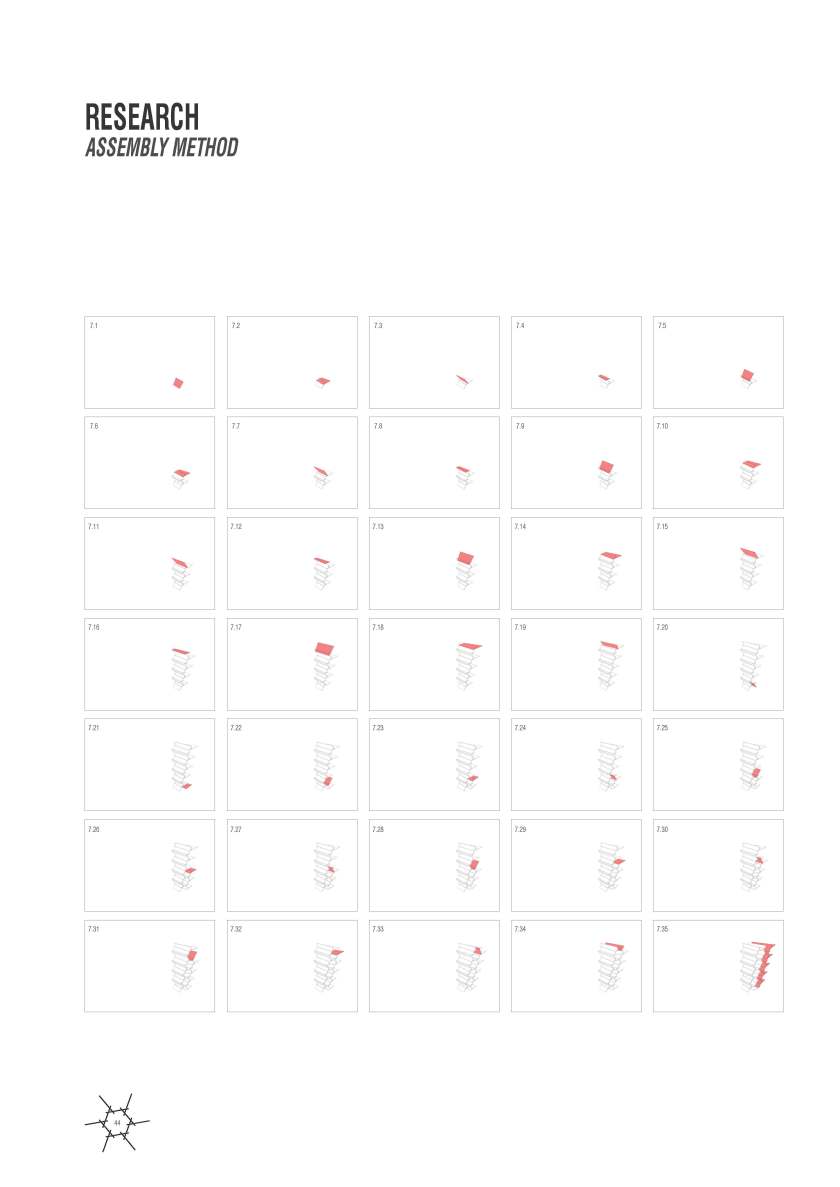







Moving further, the attempt was to implement dynamic force analysis to the design, through variation of the elemental thickness. The first test was a bridge design. The structure was anchored on 2 sides, and had a span of 5m. 

The next testing phase includes domed structures, replicating modular structures and double curved instances.




